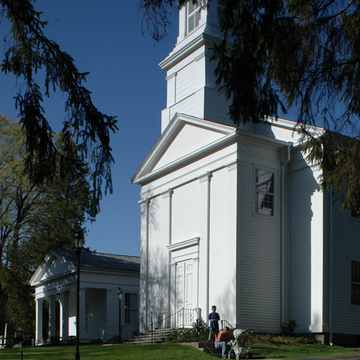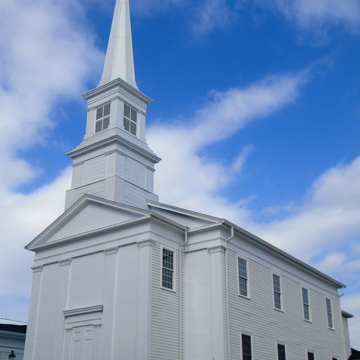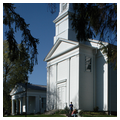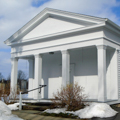A vivid illustration of the New England roots of the county's early residents is this clapboarded frame church that rests atop a knoll overlooking the village. Settlers from Attleboro, Massachusetts, formed the
In 1851, Henry Spearbeck transformed the church from Federal style to Greek Revival. He added a windowless flush-board front with colossal Doric pilasters, wrapped a plain Ionic frieze around the front and sides, framed the entrance with an entablature and pilasters, and exchanged the original open belfry for the present. The plain two-stage tower and octagonal spire are similar to those at the Congregational church in Lincoln, Massachusetts (1842), and the Presbyterian church in Bethany ( WA14). Spearbeck also may have been responsible for altering the interior and replacing the pulpit with a lower one. In 1881, a desk on a platform replaced the pulpit. The small one-story frame assembly hall along the church's south side has a well-proportioned Greek Revival tetrastyle portico and a flush-board front and pediment. A cemetery with graves dating to the early nineteenth century is behind the church.














